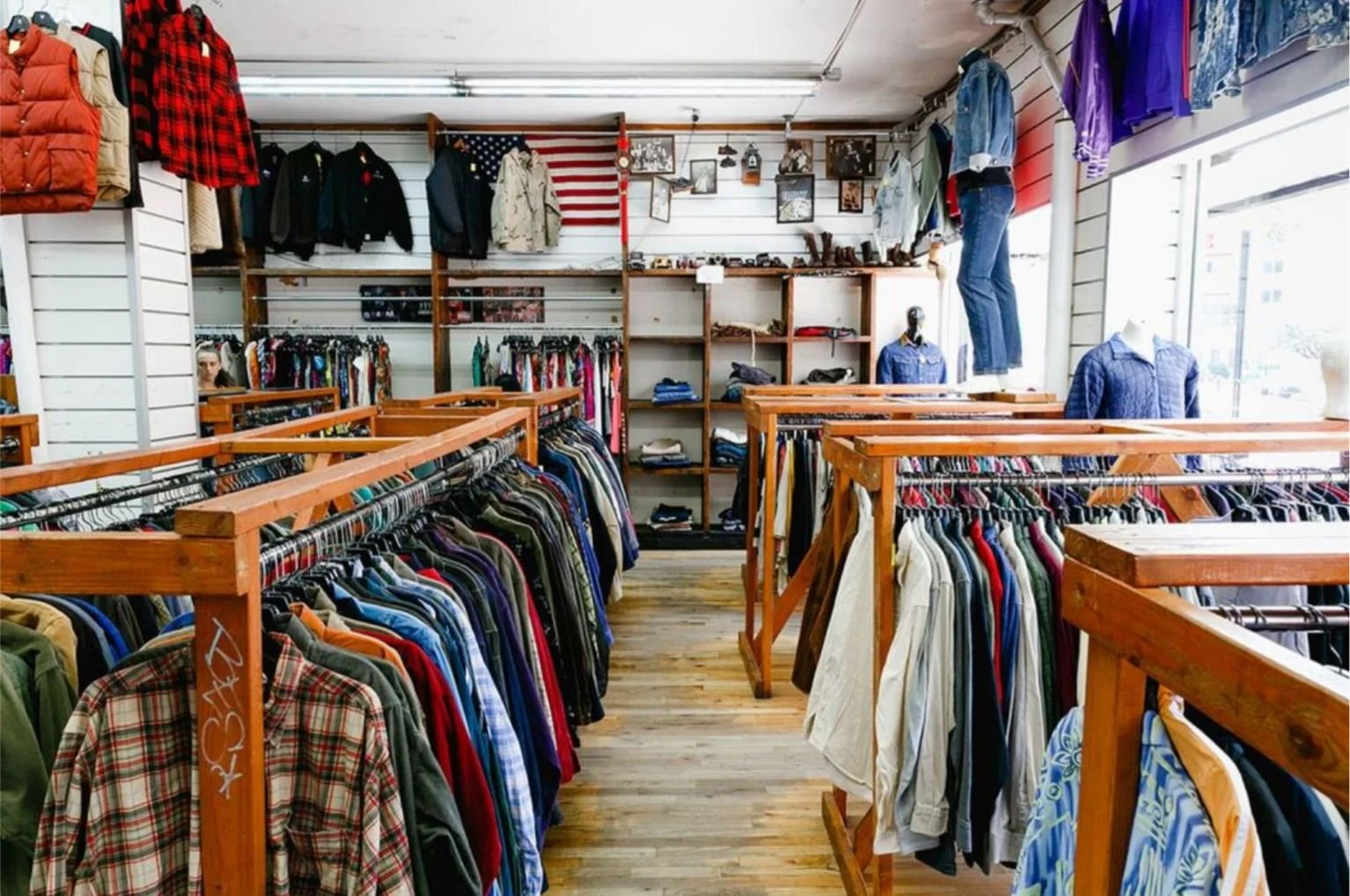The Impact of Thrifting
By Thi Prabhakaran • 2 min read
The fashion industry is responsible for over 8% of total greenhouse gases and 20% of global wastewater, with more than 85% of textiles going into landfills. To manufacture just one pair of jeans, 7,500 L of water is required, resulting in the fashion industry using 93 billion m3 of water. This volume could satisfy the water consumption needs of approximately five million people, illustrating the opportunity cost of new clothing production. With over 30% of all clothes produced never being sold, there is a clear overproduction of clothing, resulting in a significant waste of resources that could be better deployed elsewhere. One way to tackle the fashion industry’s adverse environmental impact is to make use of existing clothes and start thrifting!
What is Thrifting?
Simply put, thrifting is shopping for second-hand clothing, accessories, or household goods. Thrifting extends the lifecycle of clothes and other goods, providing an opportunity for these goods to be loved by a new buyer rather than being discarded and going to waste by the existing owner. Moreover, thrifted items are usually sold at a discounted price, providing an economical option. Someone who is interested in thrifting can do so either online or in-person, with in-person options generally being available at a thrift store, garage sale, or flea market.
Why Thrift?
Environmental Impact
The first reason to thrift is to reduce the 85% of clothes that currently go to landfills. While sitting in the landfill, clothing can take over 200 years to decompose, releasing dangerous methane gases and toxic chemicals in the process. Rather than throwing these clothes out or leaving them at the bottom of the closet to never be used again, they could be used by somebody else, extending their useful life and reducing the need to purchase and thus, manufacture new clothing. Additionally, thrifting helps decrease pollution associated with the production and selling of clothing. The mass production of cotton involves heavy water and pesticides usage, leading to water contamination and soil acidification. When soil gets overly acidic, it limits various essential plant nutrients and damages the plant's overall health.
Communal Impact
Several thrift stores are either non-profit or have a charitable purpose; therefore, donating and buying at local thrift stores ultimately benefits the community. In donating to thrift stores, one can receive the dual benefit of getting rid of clothes they no longer use without harming the environment, while also increasing the supply of affordable clothing for those in their local community. Unlike shopping at retail clothing stores, thrifting locally allows buyers to directly see where their money is going and how it is being used to better society.
Great Affordable Clothing!
Given the nature of second-hand purchasing, thrifting at your local thrift stores or markets is a great way to get vintage and unique clothing for an affordable price! At thrift stores, buyers are presented with a variety of donated goods, allowing the store to sell them for a reduced price since they do not need to initially purchase the goods from a manufacturer or wholesaler. Furthermore, thrift stores have a wide variety of options from different trend cycles and time periods, allowing buyers to use their creativity and find pieces that align with their individual style!
Sources:
https://www.un.org/en/actnow/facts-and-figures
https://www.2ndavestores.com/blog/how-thrifting-is-good-for-the-planet/ https://www.goodwillaz.org/what-does-it-mean-to-go-thrifting-2/
https://www.roadrunnerwm.com/blog/textile-waste-environmental-crisis
https://www.vagabondary.co/blog/2017/11/7/5-reasons-thrifting-is-awesome
https://calpirg.org/blogs/blog/cap/fashion-industry-waste-drastically-contributing-climate-change

